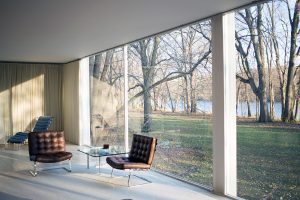Natural light has a transformative effect on the ambiance and functionality of a living space. Its presence can enhance mood, create a sense of spaciousness, and even promote better health and well-being. Incorporating strategies to maximize natural light in your home elevates its aesthetic appeal and contributes to energy efficiency and sustainability. Whether renovating an existing space or designing a new home, here are some design strategies and solutions to help you make the most of natural light.
Consider Orientation and Layout:
The orientation of your home and the layout of its rooms significantly impact the amount of natural light it receives. When designing or choosing a property, consider the positioning of windows and rooms about the sun’s path throughout the day. South-facing rooms receive the most sunlight, while north-facing rooms receive softer, indirect light. East-facing rooms are ideal for the morning light, while west-facing rooms capture the warm afternoon glow. Orienting living areas, such as the kitchen and living room, toward the south or east can maximize exposure to natural light during the day.
Optimize Window Placement and Size:
Windows are portals for natural light to enter your home, so their placement and size are crucial in light penetration. Strategically position windows to capture the most sunlight while considering privacy and external obstructions such as trees or neighboring buildings. More oversized windows and glass doors admit more light and provide unobstructed views of the outdoors, blurring the boundaries between interior and exterior spaces. Consider installing skylights or clerestory windows to introduce additional light into areas with limited wall space, such as hallways or bathrooms.
Choose Light-Reflective Surfaces:
Choosing interior design and materials can significantly impact how natural light interacts with your home’s interior. Opt for light-colored walls, ceilings, and flooring materials that reflect light rather than absorb it. White or neutral hues create a bright, airy atmosphere and amplify the effects of natural light throughout the space. Glossy or polished surfaces, such as tiles, hardwood floors, and mirrored accents, enhance light reflection and add visual depth to rooms.
Minimize Obstructions:
Clutter and bulky furnishings can obstruct the flow of natural light and create shadows within a room. Maintain a minimalist approach to interior design by selecting streamlined furniture pieces and keeping surfaces clutter-free. Consider open shelving or transparent furniture to maintain sightlines and allow light to penetrate deeper into the space. Opt for sheer or lightweight window treatments that filter light while preserving privacy, avoiding heavy drapes or curtains that block sunlight when drawn closed.
Incorporate Reflective Elements:
Introducing reflective elements into your home decor can help bounce light around the room and amplify its luminosity. Strategically place mirrors opposite windows or in areas where natural light is limited to visually expand the space and distribute light more evenly. Metallic finishes, glass accents, and polished fixtures also contribute to light reflection and add a touch of sophistication to your interior design scheme.

Utilize Open Floor Plans:
Open floor plans promote the seamless flow of light throughout interconnected living spaces. By removing partitions and barriers, light can penetrate deeper into the home and create a sense of cohesion between different areas. Consider integrating multifunctional zones that serve multiple purposes while allowing light to circulate freely. This design approach maximizes natural light and fosters a greater sense of openness and connectivity within the home.
Embrace Outdoor Living Spaces:
Connecting indoor living areas with outdoor spaces can extend the benefits of light and blur the distinction between inside and outside. Incorporate patios, terraces, or balconies adjacent to living areas to create transitional zones where natural light floods the interior. Install sliding glass doors or folding wall systems that seamlessly merge indoor and outdoor environments, allowing for uninterrupted views and ample sunlight exposure throughout the day.
In conclusion, maximizing natural light in your home involves thoughtful consideration of orientation, layout, window placement, interior finishes, and spatial organization. By implementing these design strategies and solutions, you can create a bright, inviting living environment that celebrates the beauty and vitality of natural light. Not only does optimizing natural light enhance the aesthetic appeal of your home, but it also promotes a healthier, more sustainable lifestyle for you and your family.